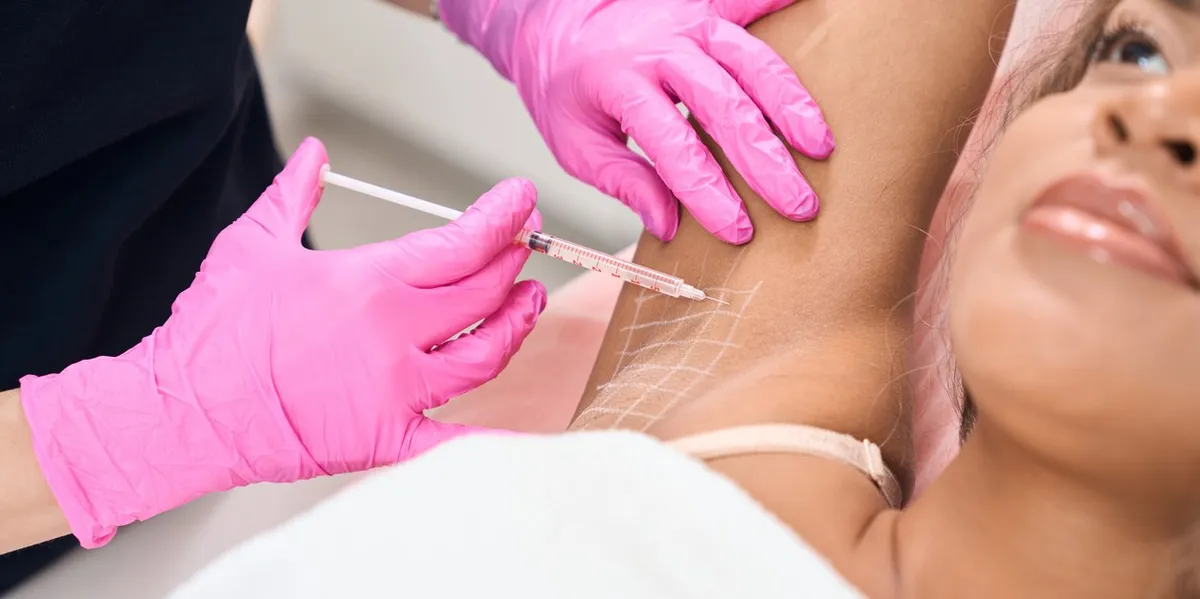
[adinserter block=”3″]
When you hear the word “Botox,” what comes to mind? Beauty? Needles? If so, you’re spot on.
Botox injections are most commonly used as a cosmetic procedure to help smooth out wrinkles by temporarily “freezing” muscles or blocking certain nerves. Think: Foreheads with no wrinkles and eyes with no crows feet.
But the benefits of Botox go way beyond beauty. It can also treat medical conditions, too, including migraine disease and overactive bladder.
A bit about Botox
Botox is made from the same toxin that causes botulism, a deadly type of food poisoning. Although that doesn’t sound like something you’d want to inject into your body, in small doses, it can help certain health issues.
And it’s really nothing new. Botox was first approved by the U.S. Food and Drug Administration (FDA) in 1989 to treat crossed eyes (strabismus). Soon after its approval, Botox was prescribed for people with uncontrolled blinking or eyelid spasms.
One act followed the other, and a star was born. In 2002, Botox Cosmetic was approved by the FDA to treat facial wrinkles. As healthcare providers (HCPs) started to give people Botox, other advantages emerged. For example, patients being treated for facial wrinkles experienced a pleasant side effect: their rate of painful migraine attacks plummeted. Now, Botox is approved to treat chronic migraine disease by preventing pain before it starts.
Read: Botox and Migraine: What You Need to Know >>
What are the off-label uses of Botox?
In addition to the FDA-approved list above, Botox is used to treat many other conditions, as well. This is called off-label use. “Medications are often used without FDA approval to treat a condition, even though they’re not specifically approved for it,” saidJoshua Zeichner, M.D., associate professor of dermatology and the director of cosmetic and clinical research in dermatology at Mount Sinai Hospital in New York City.
Some popular off-label uses of Botox include:
- Foot pain. Botox can act like padding when it’s injected into your foot and help relieve tight muscles or tendons. Botox can also be used to treat overactive sweating of the foot.
- Gastroparesis. Some people have trouble passing food from their stomach to their intestines. When Botox is injected into the stomach muscle it helps by relaxing the pyloric sphincter muscle,which can allow food to pass more easily, acting as an “on switch” for the valve.
- Depression. A study published in Scientific Reports found a lower rate of depression among people treated with Botox in various sites compared to people treated for the same conditions with different treatments.
- Spasmodic dysphonia. Involuntary spasms of the voice box can cause speaking that sounds shaky, hoarse or strained. Botox can be injected into larynx muscles to ease spasms.
- Gynecological conditions. Studies show that Botox can help ease abnormal vaginal contractions, vulvodynia — chronic pain in the area outside of the vagina — chronic pelvic pain.
- TMJ disorders. The temporomandibular joint (TMJ) connects your jawbone to your skull and acts like a hinge to help control chewing and speaking. When it becomes inflamed or irritated, it can cause headaches, earaches, jaw pain and more.
Botox is not a cure for any medical conditions. It can merely ease symptoms. Results generally last anywhere from two to four months, depending on the person and the condition.
Are there side effects from Botox?
Most people have no serious side effects from Botox although some people may experience pain, swelling or bruising at the site of injection. Other rare side effects include flu-like symptoms, upset stomach and red or irritated eyes.
Although Botox is safe for most people, you should not get Botox if you:
- Are pregnant
- Are breastfeeding
- Have weak face muscles
- Have drooping eyelids
- Have a neuromuscular disease like myasthenia gravis
Who can give Botox?
Only licensed medical providers can administer Botox. Because Botox is associated with cosmetic procedures, it might seem like the injections are no big deal. However, getting a Botox injection is a medical procedure.
As with any medical procedure, look for a provider who is licensed and has received specific training in Botox injections, with sufficient knowledge, experience and skills. It’s a good idea to ask for a referral from your primary care provider.
Is Botox covered by insurance?
When Botox is used for cosmetic reasons, it’s not covered by insurance. “Insurance will only cover medication or treatment that is medically necessary,” Zeichner said. “In many cases, there must be prior authorization demonstrating that a patient has tried and failed other therapies before receiving treatment with Botox.”
Though many flexible spending accounts (FSA) or health savings account (HSA) plans do not allow funds to be used for cosmetic treatments, some will allow for an FDA-approved Botox treatment. Check what the rules are for your plan and in your state.
From Your Site Articles
Related Articles Around the Web
[adinserter block=”3″]
Credit : Source Post






